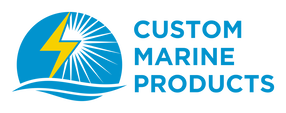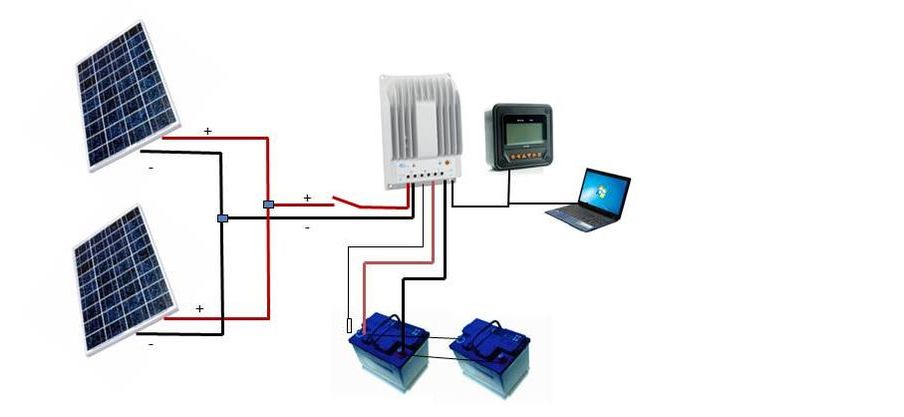|
I am often asked how to best turn a marine solar system on and off and if doing so will damage the panels. Below are some thoughts:
The solar controller is powered by your batteries, not your solar panels so you don't want to disconnect the controller from the battery bank to shut down you solar system as the controller will need to reboot and reset each time it is powered up. Rather, the proper way to turn off or shut down your solar system is by opening the positive wire from your solar array to your controller. We suggest a simple on/off switch in the positive wire from the solar array to the controller. Turning the solar array on and off with this switch will do no damage to the solar system. There is a reason it is desirable to be able to shut down the solar system with the switch or breaker between the solar panel and the controller. When charging off the alternator, you want maximum output going to the battery bank for bulk charging until the batteries are up to proper voltage. Some alternators, especially alternators with smart regulators sense the state of charge of the battery bank and determine to apply either a bulk or a float charge. If the panels are connected and producing, the regulator of the alternator will see the sum of the battery charge plus the solar charge coming from the panels. This apparent heightened state of charge may result in the regulator putting the alternator in float mode prematurely because it thinks the battery bank state of charge is higher than it really is. The same applies for the shore charger. This condition only occurs with certain combinations of alternator regulators, solar controllers and shore power chargers. Most of the time it is not an issue. Confused? As a general rule, to be certain of getting the maximum performance from your engine alternator and your shore charger, open the solar breaker when they are in use. Otherwise, experiment with your equipment and see if there is interference between the units as described above. If not, leave the solar system on all the time; that is what we do.
18 Comments
May 2017 Bruce Canavan Mariner 31 ketch - Letter to Good Old Boat Magazine I had been planning to add solar panels to my Mariner 31 ketch for some time but was having trouble finding a location that would work until I saw a dockmates side cockpit setup and decided right then to pull the trigger and get some ordered.
I got on Tom‘s website (custommarineproducts.com) and was amazed at the wealth of background and technical information available. He even has spreadsheets that will allow you to easily calculate the electrical loads for both stationary and underway situations, including various losses and reductions. Using this new found knowledge (a little being a dangerous thing) I ordered two 120 watt panels & a 20 amp MPPT controller with monitor. A couple of days later I got an email back from Tom as a follow up to discuss specifics on my planned setup. He suggested using two 10 amp controllers with separate monitors to achieve better output with the side mounts and mizzen shadow. In addition, he noted several fittings I had overlooked in the original order. He re-worked the invoice to provide the additional material with minimal additional increase in cost to me. Over the course of the next two months we maintained contact and Tom helped to resolve issues as I worked on the installation (a 13 hour round trip to San Diego where the boat is berthed slowed progress). Tom’s service is above and beyond any I have experienced. I have been recommending him with any responses I give at the dock regarding the installation. Great publication. Keep up the good work. Bruce Canavan |
Categories
All
AuthorThomas Trimmer has been cruising with his Ericson 38 sailboat on the Great Lakes for over 20 years. He has pioneered the use of solar energy for wilderness cruising. He is continually designing and building equipment to simplify and enhance the cruising experience. Archives
April 2024
|
Efficiently Powering Your Vessel/Van. Call/email/chat any time, we're happy to help you work through designing your solar system.
Home Page Solar Panels Mounting Kits Product Page Marine Solar Systems Gallery of Installations Customer Comments Contact Us
Call 248 705-8337 or email [email protected]
Article On How To Size Your Solar Panels For Your Boat
Customer Reviews Return Policy Privacy Policy Shipping Times/Rates
Home Page Solar Panels Mounting Kits Product Page Marine Solar Systems Gallery of Installations Customer Comments Contact Us
Call 248 705-8337 or email [email protected]
Article On How To Size Your Solar Panels For Your Boat
Customer Reviews Return Policy Privacy Policy Shipping Times/Rates


 RSS Feed
RSS Feed